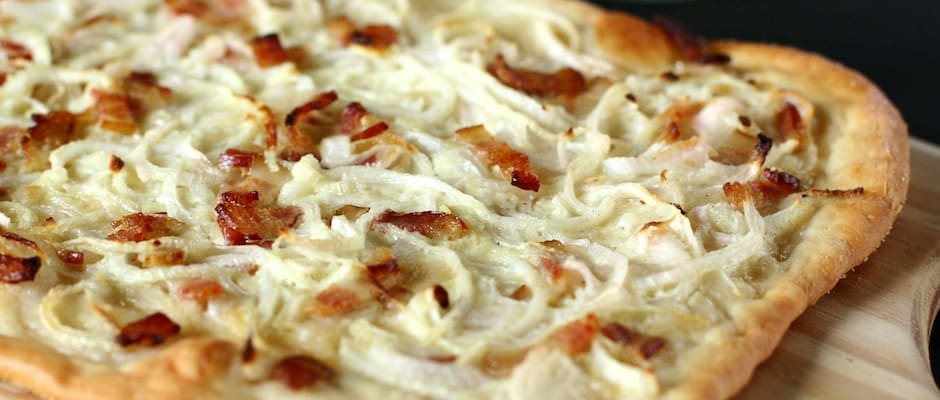Making it Last: Top Tips for Better Food Photography
You can't capture deliciousness in a photograph, but you can try.
 Credit:
Credit:
Products are chosen independently by our editors. Purchases made through our links may earn us a commission.
While today's technology makes it easy to record formerly ephemeral arts like theatre and music for posterity, there's really no way to preserve the flavor of a succulent Thanksgiving turkey or a decadent chocolate cake. But while you can't capture the taste of your food, you can certainly capture how it looks.
Professional food photographers have created an entire industry out of the practice, though as The Serious Eats Guide to Food Photography points out, much of what goes into magazine spreads and food advertising shots is pure (if artful) fakery. The juicy steaks, vibrant salads, and crispy cereal you see on TV might not actually be delicious—or even edible.
But while the pros use tricks to fake deliciousness, the vast majority of food photographers are amateurs trying their hardest to capture the essence of real food. And doing that well is another matter entirely. Here are our best tips for getting the most out of your food shots.
Presentation, presentation, presentation.
Presentation is vitally important. To start with, consider the colors and textures of the food, the plate, and even the table, if it's in the shot. Certain colors complement each other and bring out specific highlights in the food, so look for a combination that works. Rustic backgrounds—like the rough-hewn wood of a tabletop—go well with hand-glazed pottery bowls, for instance, while a gleaming marble counter might pair better with minimalist white dishes.
When you're arranging the food, remember that it only needs to look good through the viewfinder. In describing her food photography process, Elise Bauer of Simply Recipes shows how she uses this fact to her advantage, curating the camera's selective gaze to give the illusion that her salad was shot on a high-end table—not the cheap slate tile she actually used.
But positioning the food is just one side of the equation. Remember that your camera can move, and try various angles to see what works. Eye-level, table-level, and birds-eye shots can give three very different impressions—you'd be smart to try them all.
Lighting is half the battle.
Unless you're barbecuing in broad daylight, there's a good chance you'll be working in a kitchen or dining room under less-than-optimal lighting. Sure, the conditions are fine for your eyes, but they'll probably present a challenge to your camera. If you do your food blogging during the day, like Elise, natural lighting is an great option. You can diffuse sunlight from a nearby window with a sheet of paper or fabric, yielding mouth-watering results.
But for those of us confined to an evening schedule, indirect sunlight just isn't possible. Instead, position the food so that it's illuminated by a bright spotlight, taking care that shadows and other dark areas are avoided.
While flash photography can be tempting, it usually turns out uneven and unnatural unless you've mastered bounce flash techniques. Instead of worrying about that, take the time to experiment with your direct lighting, including playing with diffusers, until you find something you like. Good light is the key to good photography, and it's far easier to correct lighting mistakes before you get to the editing stage than after.
For a more in-depth take on the subject, check out this fascinating guide to food photography lighting by Mark Petko at Your Kitchen Camera.
The camera isn't everything.
Is your camera good enough? Regardless of what you're shooting with—from a lowly point-and-shoot to a mighty Nikon D4—the answer is almost certainly yes. (Though if you're just desperately looking for an excuse to upgrade, then no, of course your camera isn't good enough.)
It does help to have a camera with interchangeable lenses, control over vital shooting parameters, and the ability to shoot in RAW, but smartphones have been known to take some pretty delicious photos. Just check Instagram.
The point is, improving your technique is far more important than improving your gear. That's a constant in all varieties of photography, not just food.
...but a good lens can make a real difference.
Unless you're shooting whole roasted hog, you're probably going to have to get close to fill the frame. For that reason, it's important to have a lens that focuses close. Most point-and-shoot cameras offer a fairly capable macro mode, but not all DSLR lenses can get very close. This is where a macro lens can be a very smart purchase. Even so, a normal 35mm or 50mm lens should be fine for most shots.
To get shots with a shallow depth of field—you know, those lovely blurred backgrounds—you're going to want a lens with a large aperture, signified by an f-stop of f/1.4, f/1.8, or f/2. The other major advantage of these "fast" lenses is that the larger lens opening provides the sensor with more light. That results in lower image noise, and the ability to use faster shutter speeds.
Smartphone shooters, don't lose hope: You can still get some shallow depth of field from your iPhone if you focus close, though the results won't be as impressive as those from a "real" camera.
Push the Button. Push it again.
The most important thing you can do is take a lot of pictures. Unless you're shooting film, one photo costs the same as 100, and when it comes to photography, practice most definitely makes perfect. Cover your bases by capturing different angles, depths of field, and exposures. Sometimes you won't know right away which angle is best, and taking a few extra minutes to make sure you get it right is totally worth it. Trust us, you won't want to set everything up twice.
If you're shooting something static—no steam rising, for instance—longer exposures are fine. Just make sure you use a tripod to prevent camera shake. While you can probably get away with shooting at higher ISO levels—unless you're shooting for print—low ISOs and long exposures will result in the highest-quality images possible.
You can fix it in post.
Even with good lighting, it's likely your images won't be perfect out straight of the memory card. Here's where we recommend shooting RAW, rather than JPEG. RAW files greatly enhance the post-production editing options for any photograph, including powerful adjustments to white balance, exposure, and image noise. With RAW, you can adjust a few sliders in Photoshop and fix major errors, essentially creating a whole new image post-capture. With JPEG, you're much more locked in.
Most advanced cameras these days offer RAW support, though the cheapest point-and-shoots and most smartphones do not. On the software side, if you've got $120 to spend, Photoshop Elements lets you play with color, exposure, and a whole lot more to get your images up to snuff. GIMP and Paint.NET are also excellent options for tech-savvy photographers on a tighter budget.
If you're in a hurry...
You might not have the time or ability to set up a shot properly. Some culinary moments happen without warning, and most restaurants won't respond well to a request to turn up the lights. But there are still some things you can do to ensure you get the best possible shots.
One easy tip from The Kitchn is to ask for a window seat at restaurants. If you're shooting at home in a hurry, fear not: Most of the tips detailed above can still be applied—it's just harder to get it all right without time to set up.
Even if you're scrambling to get the shot before serving a big family dinner, you can take a few seconds to try different angles, different framing, and different light. Release the shutter as many times as you can and hope for the best. One of them might work out, and if not... well, you can always cover up your mistakes with Instagram filters, right? Everybody's doing it.
Lather, rinse, repeat.
Like cooking, photography takes practice, and picking up the camera as much as you can is the best way to learn and improve. Try different things, seek different opinions, and most of all, look at lots of food photos and learn from them.
Even those shots of fake food from glossy cooking magazines can teach you valuable things about lighting, and even Instagram shots can prove instructive when it comes to composition and framing. See what works and what doesn't, and port the good stuff over to your own work.
[Hero image: Flickr user, "lulu cooks"]
